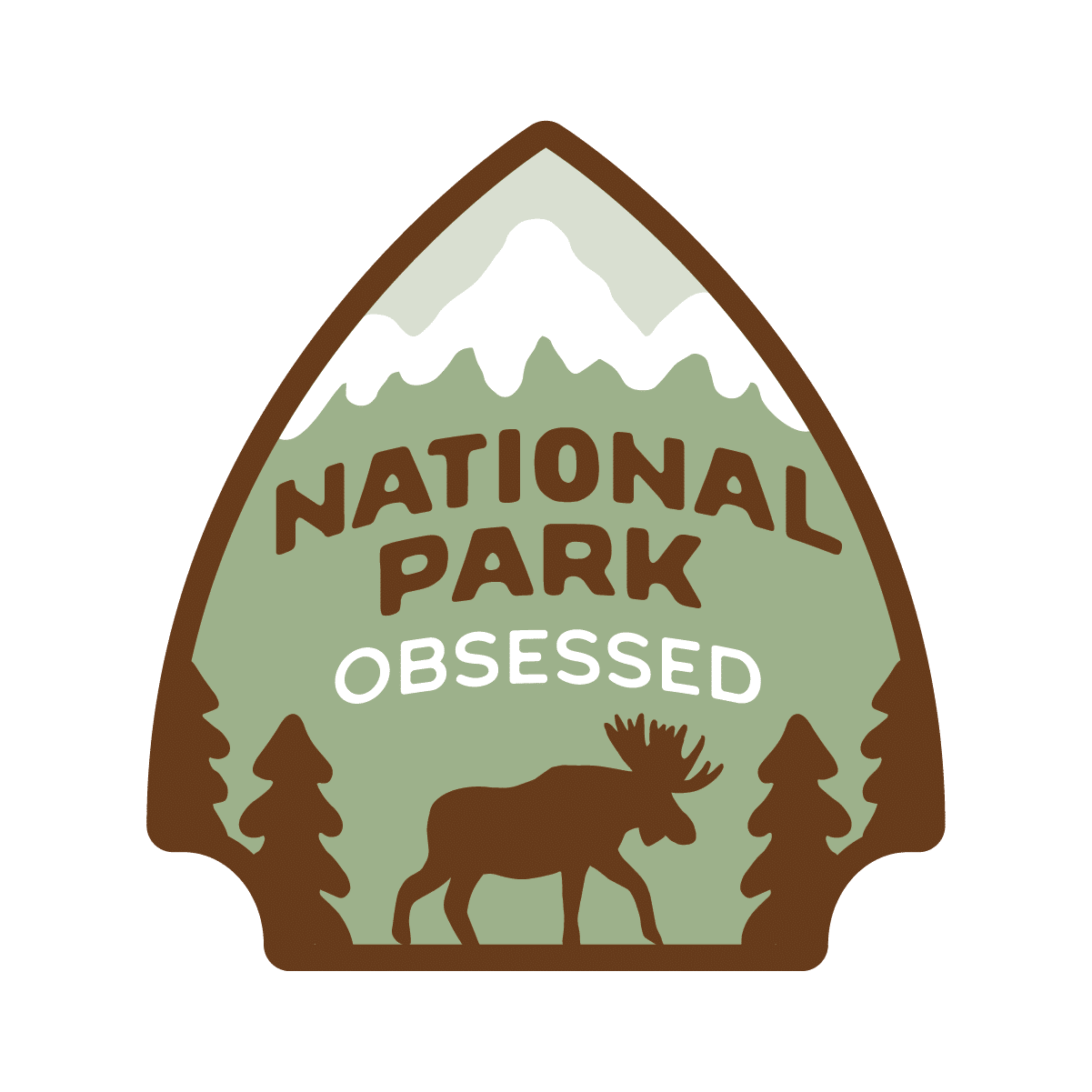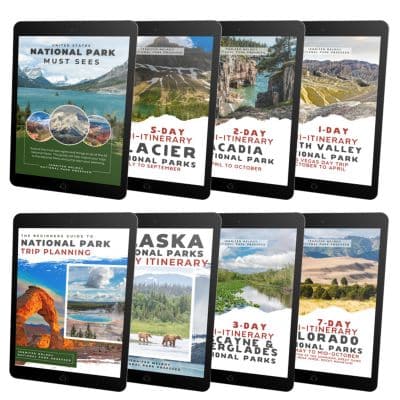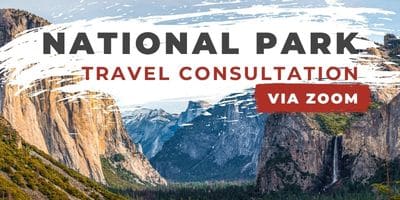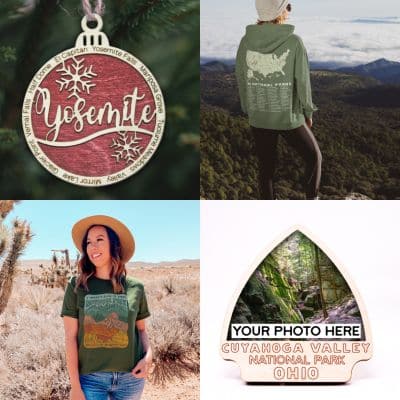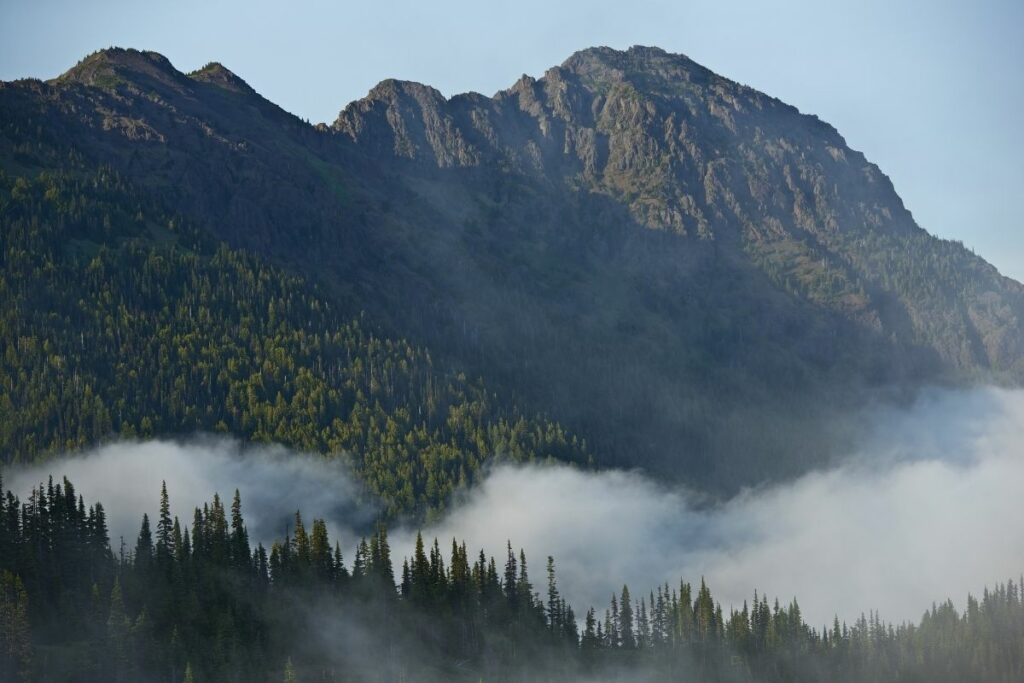
National Parks in Washington: Explore the 14 Washington National Parks (2022 Update)
- Jennifer Melroy
- Last Modified January 3, 2022
- First Published on September 18, 2021
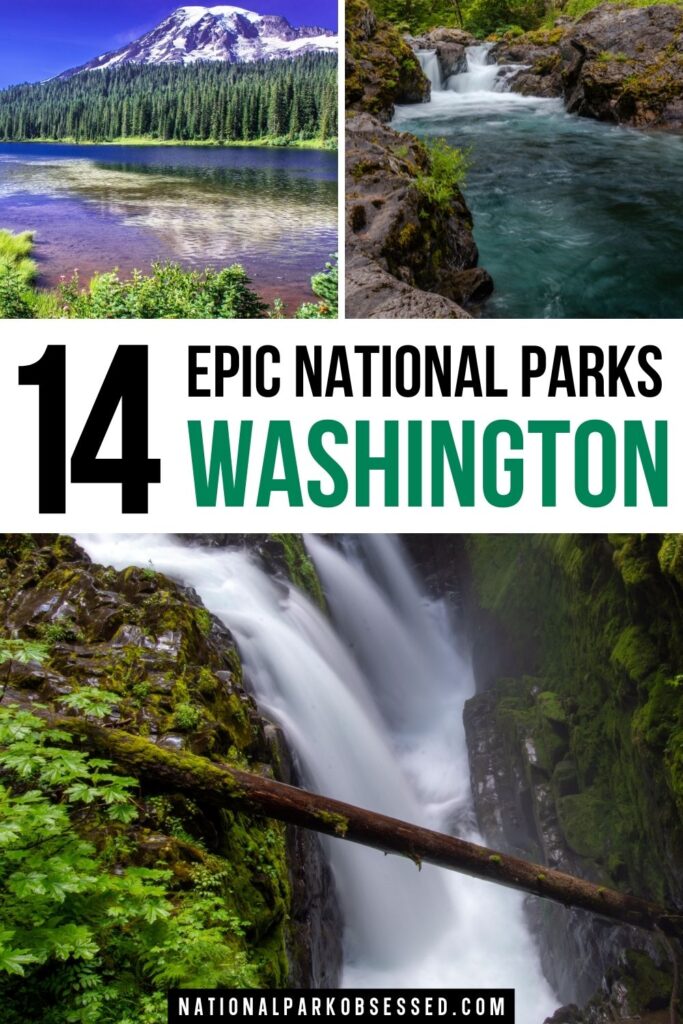
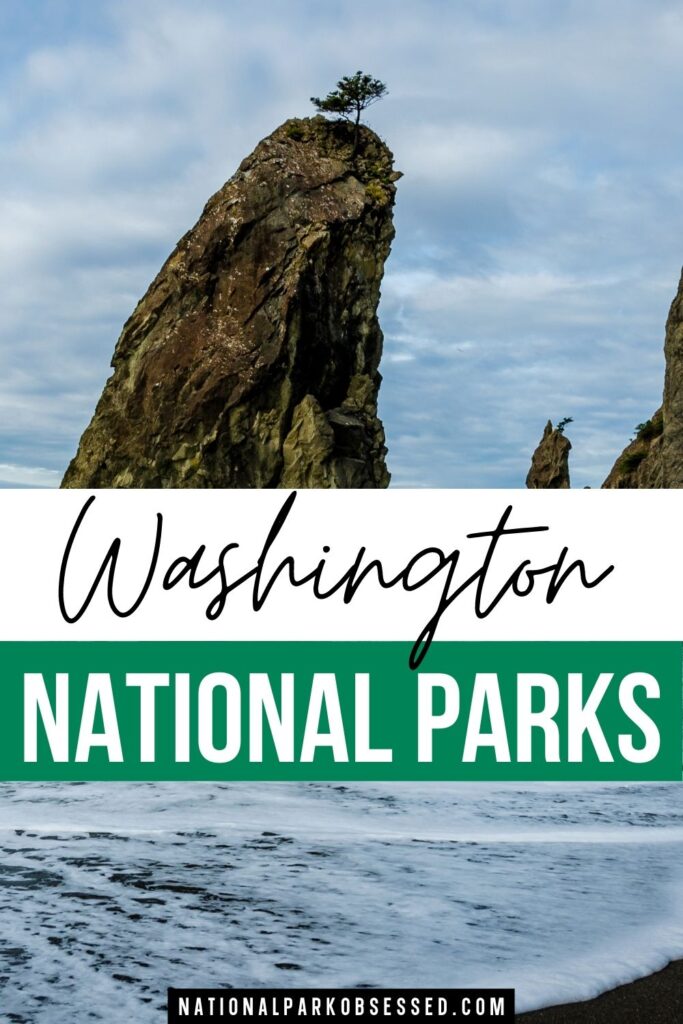
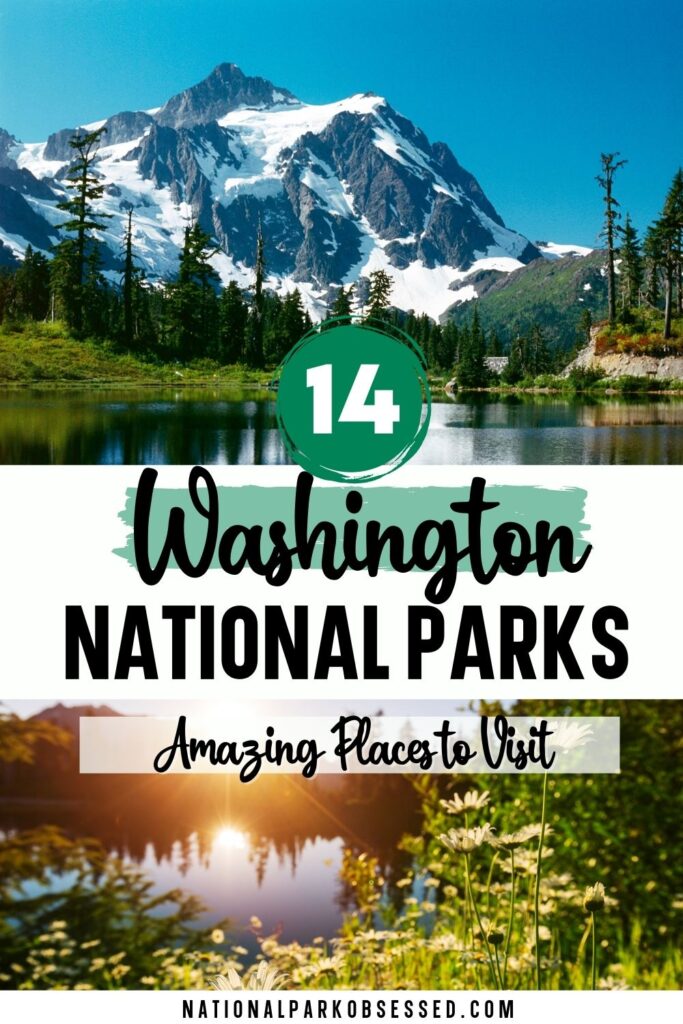
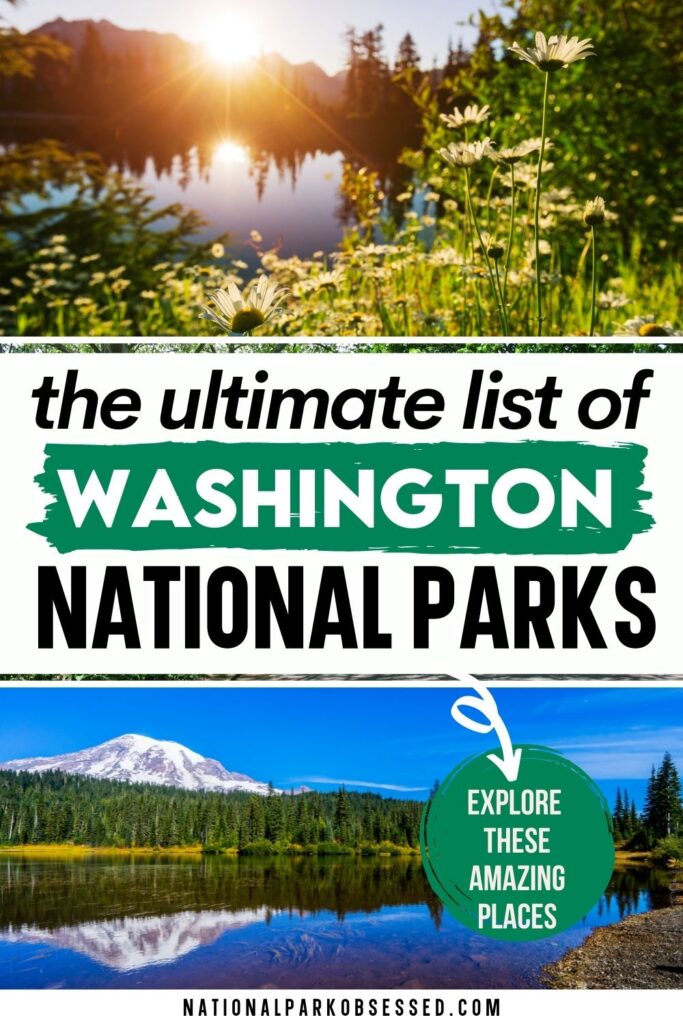
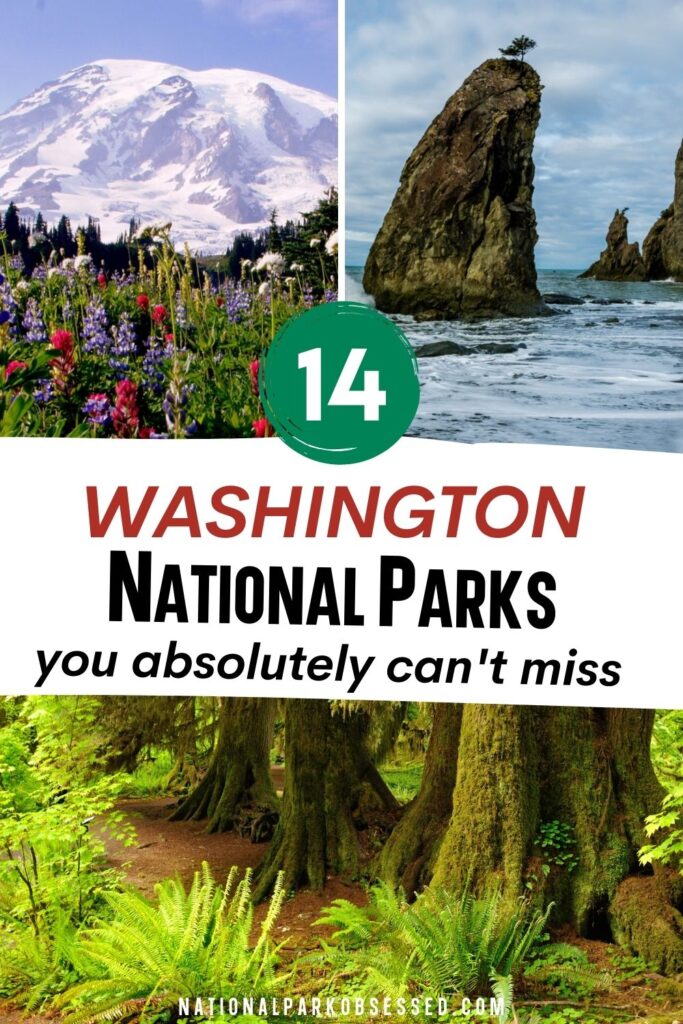
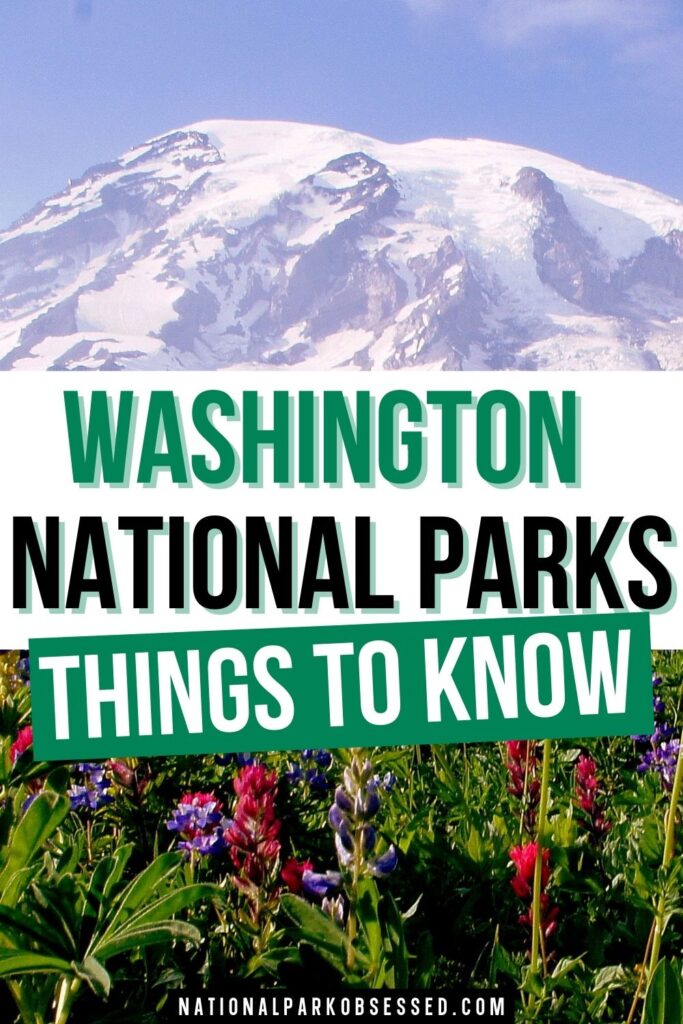

Post Summary: National Parks in Washington
Nicknamed the Evergreen State, Washington boasts acres and acres of forests, glaciated mountains, and beautiful destinations for travelers to enjoy. Within these natural attractions is a wealth of flora and fauna for explorers to find. This Northwestern state has a wealth of wildlife, lush greenery, and alpine views. More than these, this state is also rich in historic and cultural relevance. With 19 National Parks to choose from, travelers have so much to look forward to. Aside from learning more about the area, there are so many spots for different recreational activities like hiking, boating, horseback riding, and even scuba diving.
Seattle City is the largest city in the state and provides its more modern attractions like museums and monuments. However, visitors can also make their way throughout the state to explore more remote terrain and discover off-the-beaten-path destinations like the breathtaking North Cascades and Ross Lake.
With events dating all the way from the ice ages to ancestral Native Americans, to the first occupation of European settlers, and much more, travelers have a wealth of knowledge to discover and stories to uncover from this beautiful state. Read more about what could be in store for you on your next journey below!

This post may contain affiliate links, meaning if you book or buy something through one of these links, I may earn a small commission at no extra cost to you! Read the full disclosure policy here
Map of National Parks in Washington
Washington National Parks
Washington is part of the West Coast Region.
Ebey’s Landing National Historical Reserve
The Ebey’s Landing National Historical Reserve preserves the historic exploration of Puget Sound in 1792 and the early settlements of the 19th century in the area.
The Puget Sound is the stretch of waters south of the Tacoma Narrows in Washington. It was named by explorer, George Vancouver after his lieutenant companion during the expedition, Peter Puget. This exploration was well documented enough to allow many early settlers easy access and beginnings in the area. There was an even larger influx of newcomers when free land was offered to anyone that can create a homestead in the area for at least four years. From then on, the island became home to many with the Ebey family being one of the first that settled here.
The Puget Sound is defined by the three main entrances of the waters: the Admiralty Inlet, the Deception Pass, and at the end of the Swinomish Channel. Along these waters, there are many areas to explore by visitors. These waters are home to many native species of fish like sockeye salmon, steelhead trout, and char.
From beautiful landscapes of clear blue waters against thick green forests or even snow-capped peaks visible from the harbors. Other than the view, visitors enjoy a wide variety of outdoor activities like scuba diving, hiking, and birdwatching.
Things to do: Nature Sightseeing, Scuba Diving, Hiking, Birdwatching
How to get there: On Whidbey Island in Puget Sound, Ebey’s Landing National Historical Reserve is located. The island is easily accessible by car from the mainland through Washington State Route 20 and Washington State Ferries from Mukilteo or Port Townsend. Whidbey and Sea-Tac Airports are both accessible by plane. The Island Transit bus service, which operates from Clinton to Deception Pass State Park, is free on Whidbey Island.
Where to Stay: In the Reserve and its surroundings, accommodation is all readily available like hotels and hostels. Fort Ebey State Park and Fort Casey State Park are also campsites available for overnight stay >> Check prices of nearby hotels on Booking.com or Hotels.com
Entrance Fee: Free
Official Website: Click Here
Map: Download
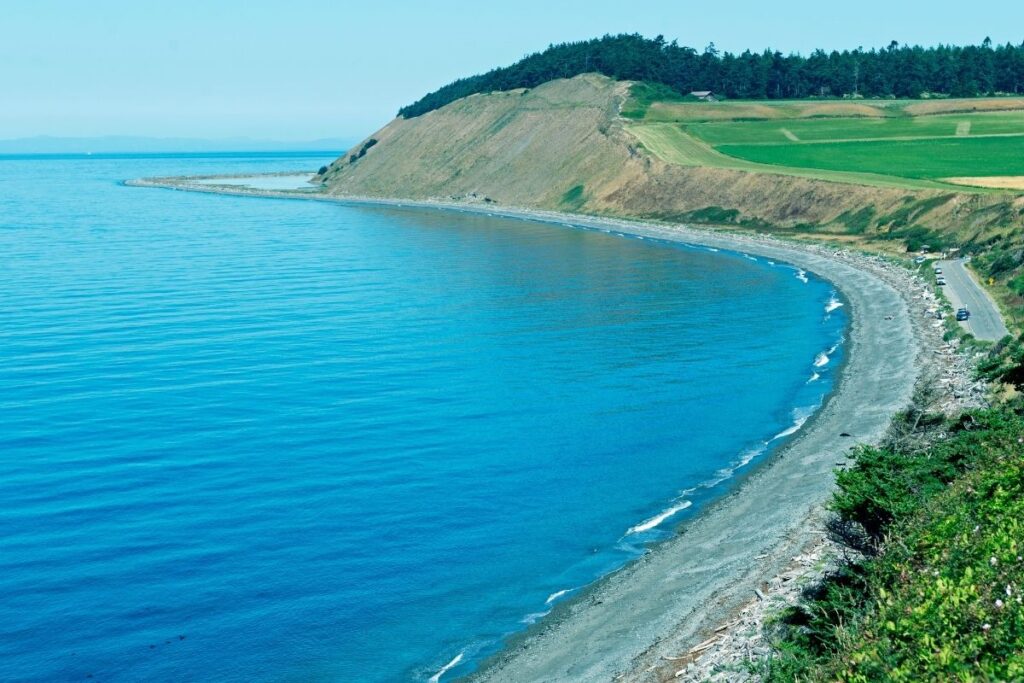
Fort Vancouver National Historic Site
Turned into a National Historic Site in 1961, the Fort Vancouver National Historic Site commemorates the rich history of the area. It consists of two units. One in Oregon City and the other in Vancouver, Washington.
The main unit of the site is Fort Vancouver. This fort was essential during the fur trading post of the Hudson Bay Company. This fort was instrumental to the operations of the company until 1860. On this historic site, visitors can learn more about the history of trade in this area. Another key feature is the Vancouver Barracks which is a British trading post that was constructed after the Hudson Bay Company abandoned the area in favor of their other stations. The last key feature that is in Vancouver is the Pearson Air Museum and The Jack Murdock Aviation Center where travelers come from all over the country to learn more about the history of flight, a massive collection of aircrafts, and more.
The last destination of the site is located in Oregon City.
Things to do: Hiking, Museum Exhibits, Birdwatching, Picnicking, Biking
How to get there: The sections of the site are all located on the north bank of the Columbia River in Vancouver, Washington. Drivers can go from I-5, take the Mill Plain Boulevard exit (Exit 1-C), and head east.
Where to Stay: There is no accommodation available on the site itself, but there are neighboring cities that offer various hotels, inns, and motels in Washington. >> Check prices of nearby hotels on Booking.com or Hotels.com
Entrance Fee: Free
Official Website: Click Here
Map: Download
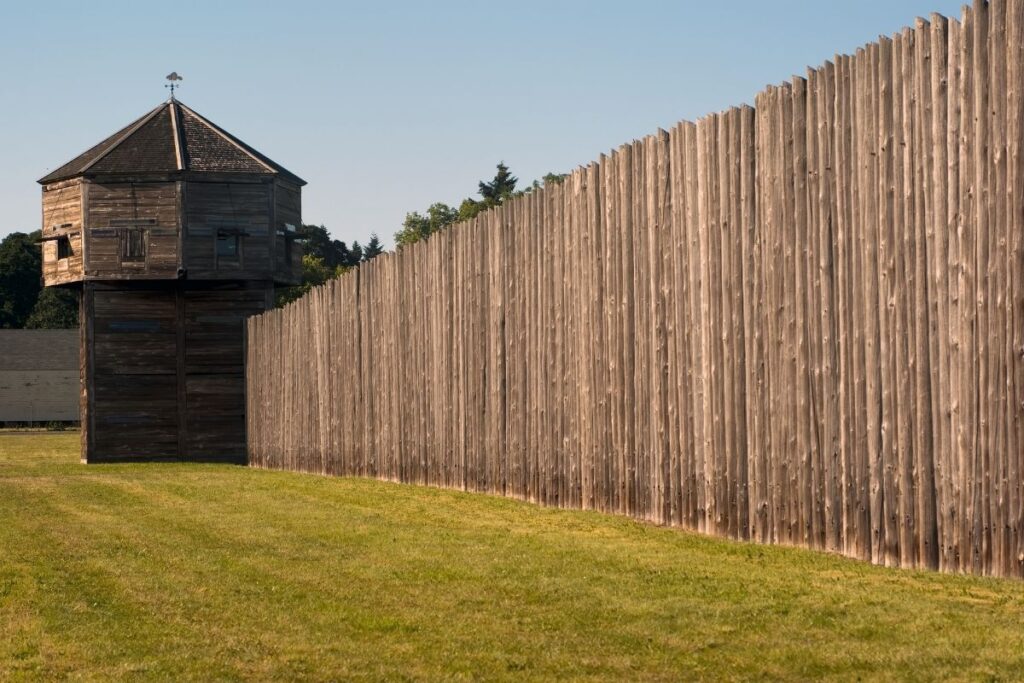
Klondike Gold Rush National Historical Park
When Alaska struck gold, everything changed for the people of Alaska and the surrounding territories. After headlines of Gold in Alaska were heard, over a hundred thousand miners tried their luck and made their way towards Alaska.
The first family that struck gold was of Skookum Jim in 1896. Their discovery sparked a massive influx from all over the country. This sudden race made waves in the economic and cultural landscape of the area for decades to come.
The frantic communities made their way through different routes towards the goldfields. The rich man’s route was to sail towards Alaska directly. Others would aim to walk the whole route which delayed them infinitely. Others braved treacherous snow-filled overlands promising a shortcut but instead finding their demise. Others chose the poor man’s route, which is the cheapest but still direct route to the last frontier. They took the White Pass and Chilkoot Trails.
One of the key areas all these travelers passed through was Seattle. Many of them would stop at this Washington port to board ships and sail north in search of a better life. This area became the gateway of adventure and still is today. The Klondike Gold Rush National Historical Park aims to remember one of the great race to fortune of American history and travelers can now learn more about it in the park.
Things to do: Visit Museums
How to get there: The Seattle Unit of the park is located just at the corner of South Jackson Street and 2nd Avenue of downtown Seattle, Washington in the Pioneer Square Preservation District. The nearest airport is Seattle–Tacoma International Airport.
Where to Stay: There are many choices of accommodation around Seattle like hotel chains, hostels, and inns. >> Check prices of nearby hotels on Booking.com or Hotels.com
Entrance Fee: Free
Official Website: Click Here
Map: Download
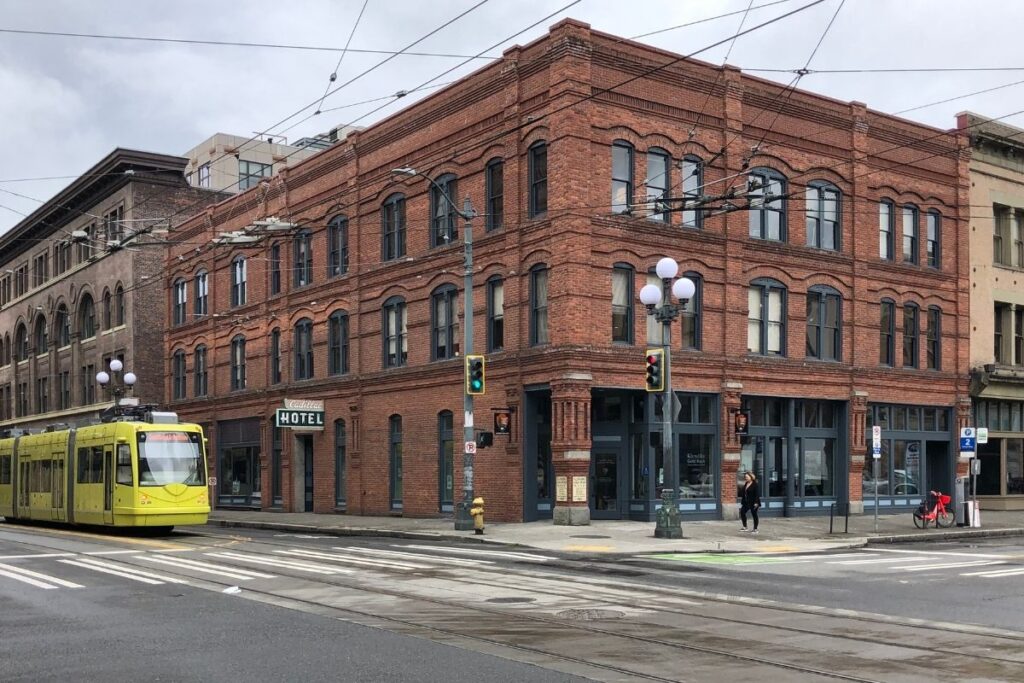
Lake Chelan National Recreation Area
The Lake Chelan National Recreation Area encompasses an area of over 60,000 acres including the northern end of the Lake Chelan, Stehekin Valley, and the Stehekin River.
Visitors of the Lake Chelan National Recreation Area can bask in the gorgeous views of the lengthy rivers winding down the Cascade Mountains and the icy expansive lake. The lake itself is one of the deepest in America with a depth of over 1,500 feet. Travelers can also come to enjoy activities like boating, fishing, and lakeshore camping or visiting a beautiful remote town of untouched nature. The small town only has fewer than 100 permanent residents. This town is almost completely inaccessible except by floatplane, ferry, or a hiking trail through the Cascade Range.
This recreation area is included as part of the North Cascades National Park Service Complex and is now managed by the U.S. National Park Service.
Things to do: Boating, Fishing, Hiking, Camping
How to get there: Aside from a difficult hike through the Cascade Range, the town of Stehekin can only be accessed through a floatplane or passenger ferry.
Where to Stay: Cabins and other lodging options are available in the small remote town of Stehekin. Other options of accommodation are available in Chelan County as well. >> Check prices of nearby hotels on Booking.com or Hotels.com
Entrance Fee: Free but there is a $5 dock permit.
Official Website: Click Here
Map: Download
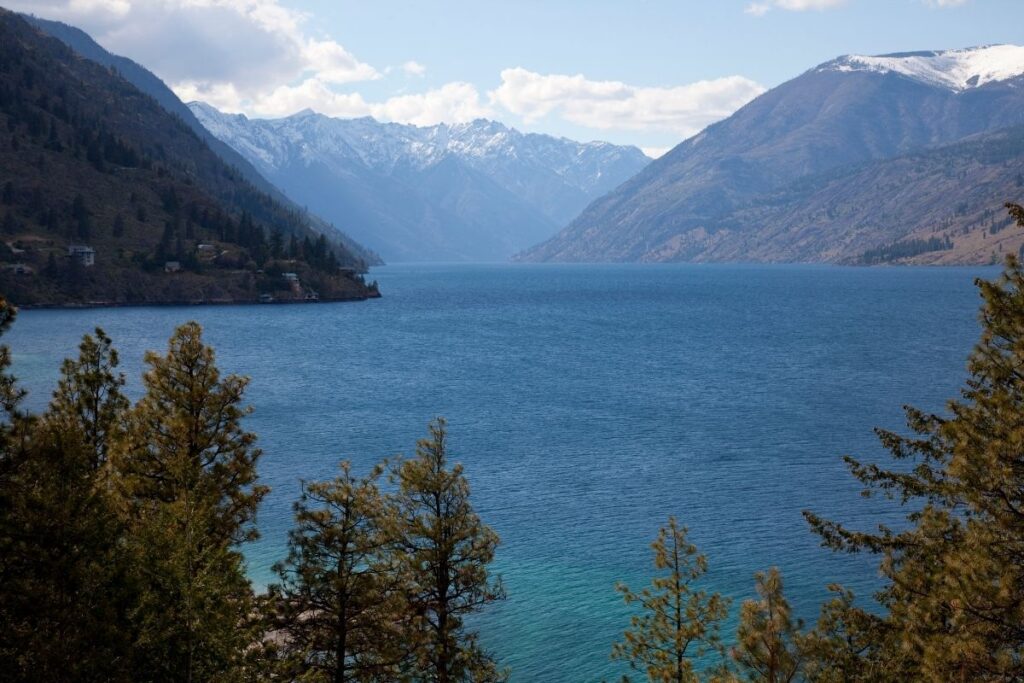
Lake Roosevelt National Recreation Area
130-mile long and covering the Franklin D. Roosevelt Lake is the Lake Roosevelt National Recreation Area. It is located between the Grand Coulee Dam and Northport, Washington.
The long lake encourages visitors to frequent the marina for activities like fishing, swimming, canoeing, boating, hunting, and camping. Here, travelers can learn about the trade industry from its history and visit other historic sites. A prominent historic site in the recreation area is Fort Spokane and St. Paul’s Mission. Fort Spokane is an army outpost to separate the Colville and Spokane tribes in the 1800s. The latter historic feature is a Jesuit mission church that still stands today and was created in the 1830s.
This area was established under the care of the National Park Service in 1946 as the Coulee Dam Recreational Area but eventually renamed after President Franklin D. Roosevelt in 1997.
Things to do: Boating, Canoeing, Kayaking, Fishing, Hiking, and Hunting
How to get there: If coming from Spokane or Seattle, travelers can take I-90. The nearest available airport is the Seattle-Tacoma International Airport for tourists flying in.
Where to Stay: Camping is allowed in Lake Roosevelt but is for reservation only. Primitive boat-in campsites are also available but are on a first-come, first-served basis. >> Check prices of nearby hotels on Booking.com or Hotels.com
Entrance Fee: Free
Official Website: Click Here
Map: Download
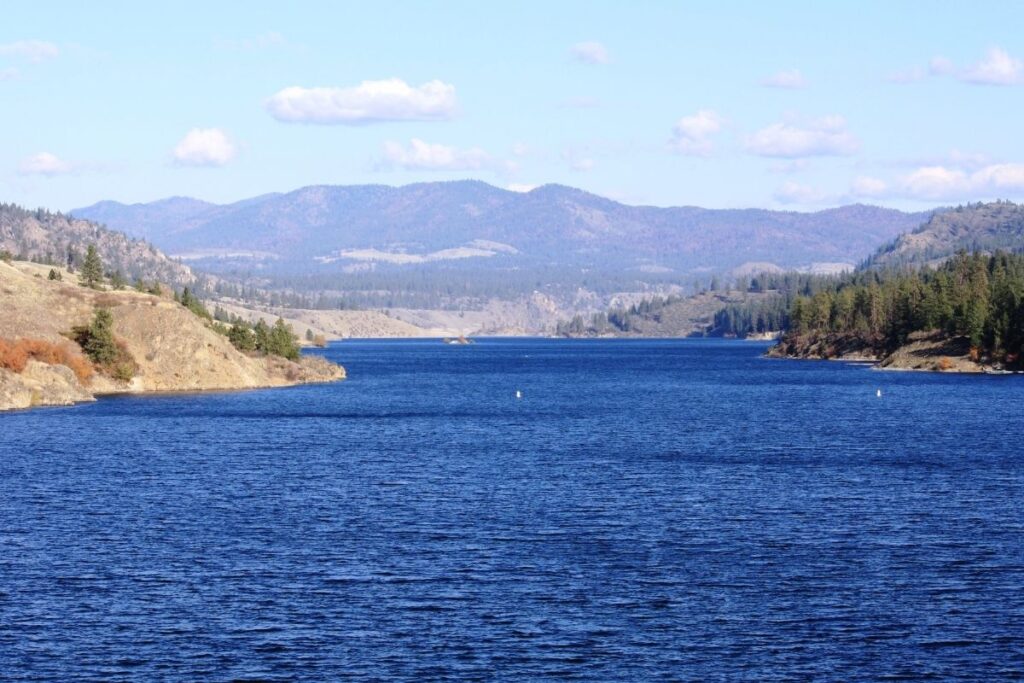
Lewis and Clark National Historical Park
The Lewis and Clark Expedition is one of the greatest conquests of discovery known in America’s history. The Corps of Discovery were chosen members of the U.S. Army and other volunteers who followed Captain Meriwether Lewis and Second Lieutenant William Clark. The goal was to traverse and cross the Louisiana Purchase that was just acquired from France.
The expedition began in 1804 from Camp Dubois which is now in present-day Illinois and the corps made their way towards Louisiana. In Washington, tourists can visit two state parks related to this historic event: the Cape Disappointment State Park and Fort Columbia State Park. Cape Disappointment offers camping grounds, a beautiful ocean beach facing the Pacific, hiking trails, and the remains of Fort Canby. Fort Columbia is a coastal artillery post where visitors can learn more about the regional history of the area. Another prominent feature is where the captain first saw the Columbia River. This destination is called Chinook Point.
The National Historical Park was officially established on November 12, 2004.
Things to do: Guided Tours, Hiking, Paddling, Wildlife Viewing, and Fishing
How to get there: Nearest airports in the area include Ilwaco Airport and Astoria Airport. By car, travelers can drive up to Longbeach and head to the Cape Disappointment State Park. Fort Columbia is on Hwy. 101 in Chinook, Pacific County, Washington.
Where to Stay: There is no lodging or camping within the park, however, the majority of choices can be availed in nearby towns like Astoria. >> Check prices of nearby hotels on Booking.com or Hotels.com
Entrance Fee: $10 per person or free with an America the Beautiful Pass.
Official Website: Click Here
Map: Download
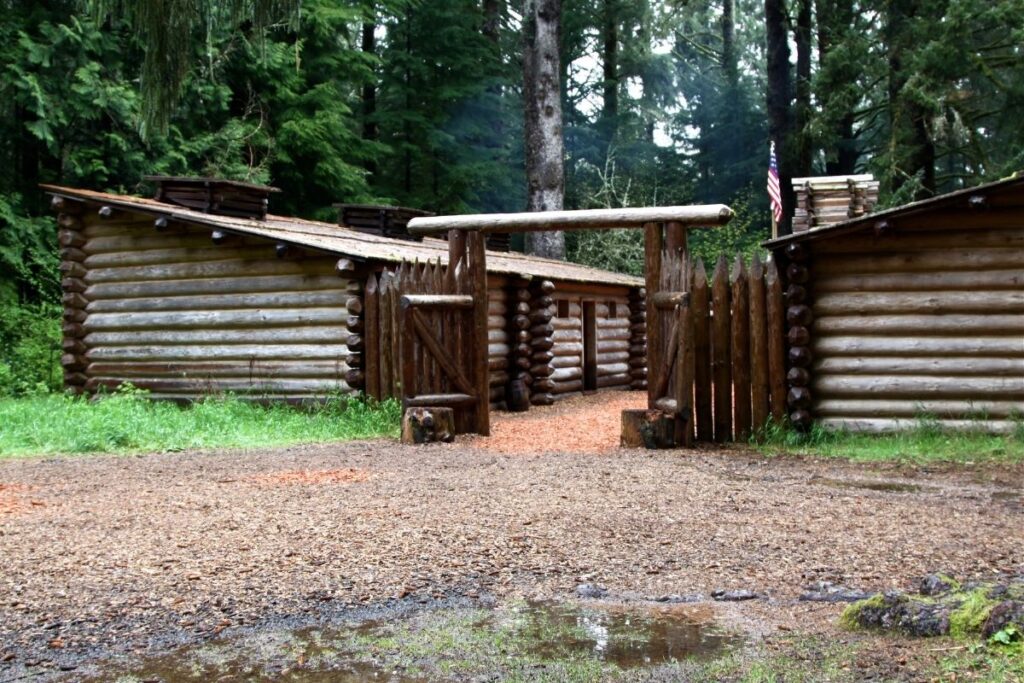
Manhattan Project National Historical Park
Along with the efforts of the Department of Energy, the National Park Service preserves the secret sites across the country that helped create the first atomic bomb. The Manhattan Project National Historical Park aims to educate visitors of its history, significance, and the scientific revolution of the atomic age. The park has three units in Tennessee, New Mexico, and Washington.
In Hanford, Washington, visitors can find a secret factory by the Hanford Engineer Works that made plutonium which is an integral part of the atomic bomb. This site was chosen as there was an abundant supply of cold Columbia river water that was needed to keep the nuclear reactors cool. The engineers and staff that worked here constructed and operated the reactors that were used to create the atomic bomb that was dropped on Nagasaki, Japan in 1945. Travelers can learn more about it through the museum and guided tours available in Hanford.
This was designated under the joint care of the Department of Energy and National Park Service only very recently in 2014.
Things to do: Guided Tours, Visit Museums
How to get there: The nearest airports are Tri-Cities airport (Richland, Kennewick, and Pasco). By car, visitors can take the I-95 or I-84 to get to Richland.
Where to Stay: Many options for lodging are only available around the park in the city of Richland, Washington. >> Check prices of nearby hotels on Booking.com or Hotels.com
Entrance Fee: Free
Official Website: Click Here
Map: Download
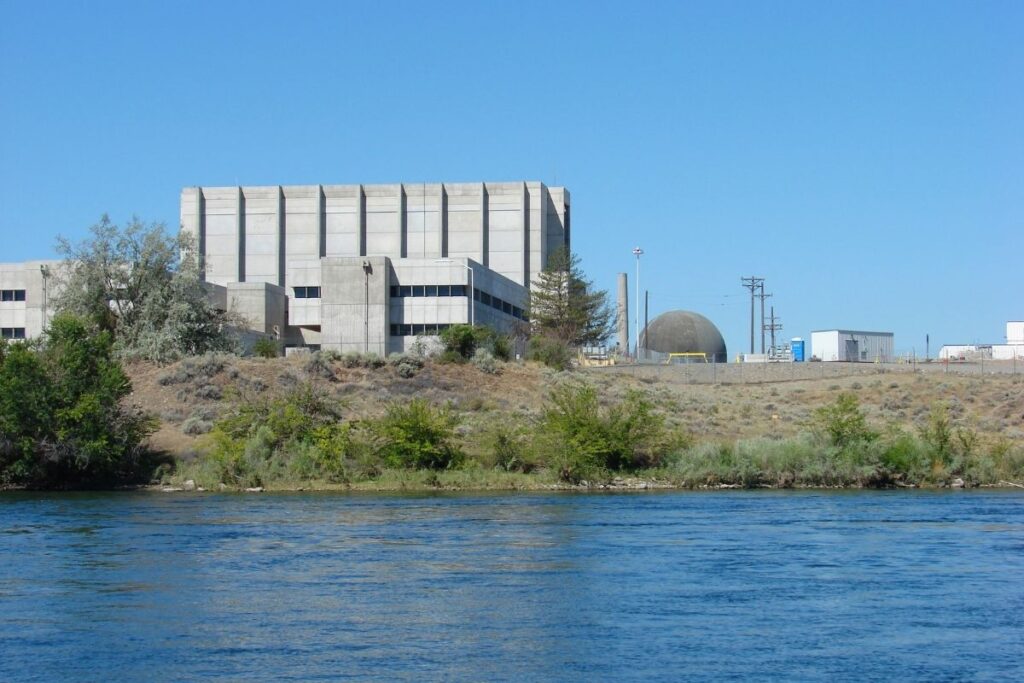
Mount Rainier National Park
Mount Rainier National Park preserves the breathtaking mountainous landscape of Pierce and Lewis County in Washington. This national park is most known for Mount Rainer, a gargantuan stratovolcano that stands more than 14,000 feet above sea level.
Mount Rainer is also the most glaciated peak with five major rivers. This is the highest point of the Cascade Range and includes lush valleys, roaring waterfalls, subalpine meadows, and many acres of forests. With this distinct climate, many species of wildlife thrive and are native to the area. Rarer species of bats call the mountain home along with moles, elk, deers, and mountain goats. Hikers also spot black bears, bobcats, and the occasional mountain lion in the area. Sometimes, travelers can also see unusual birds soar through the sky like the northern spotted own or even bald eagles. This glaciated mountain hosts a plethora of flora and fauna explorers get to enjoy.
The Mount Rainier National Park was established on March 2, 1899, as the fifth national park in the United States.
Things to do: Bicycling, Climbing, Fishing, Boating, Hiking
How to get there: The nearest airport available for travelers flying in is the Seattle-Tacoma International Airport which is about 85 miles away. If traveling by car, you can take SR 706 to the Nisqually Entrance of the park or SR 165 through Wilkeson.
Where to Stay: There are two hotels located within the park: National Park Inn, in Longmire, and the Paradise Inn, in Paradise. Other options are available in surrounding towns. >> Check prices of nearby hotels on Booking.com or Hotels.com
Entrance Fee: $30 per vehicle for a 7 day pass or free with an America the Beautiful Pass.
Official Website: Click Here
Map: Download
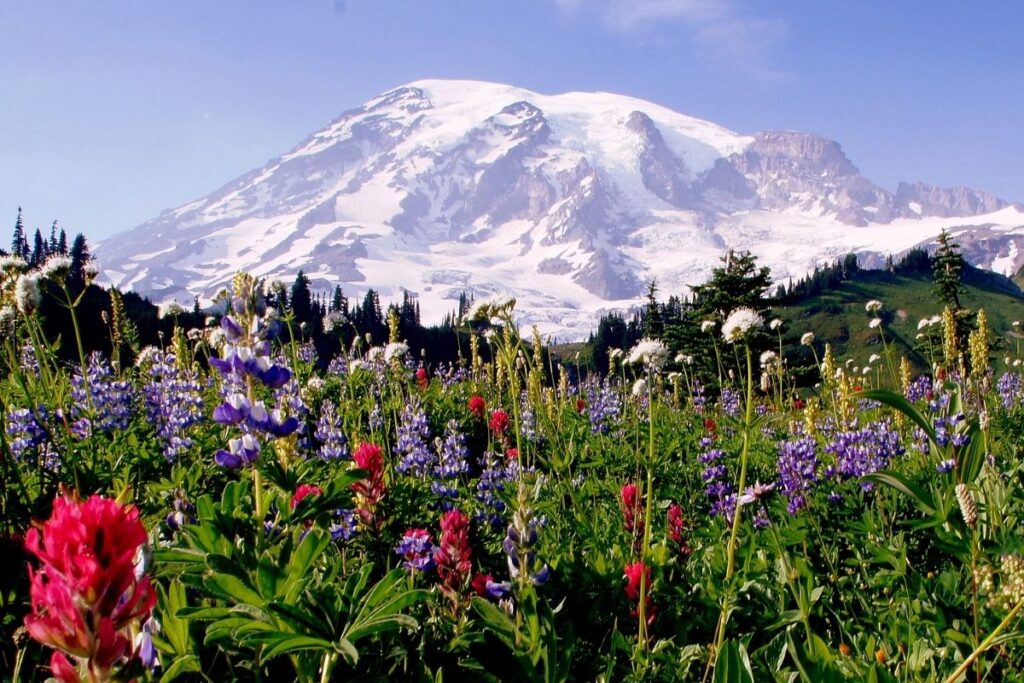
Nez Perce National Historical Park
Nez Perce National Historical Park comprises 38 sites across four states, Idaho, Montana, Oregon, and Washington. This historical park preserves the remains and legacy of the Nez Perce People or otherwise known as the Nimiipuu tribe. Visitors can learn more about the way of life of the Nez Perce People and how they maintain as an independent nation.
The Nimiipuu tribe is a self-governing nation that is maintained through treaties with the government of the United States. The Nez Perce People settled across these four states and moved through parts of Wyoming to hunt and gather. They are experts in fishing and hunting and have thrived in these areas since the inception of the tribe. Today, they reside in the Nez Perce Reservation with over 3,500 enrolled citizens and about 770,000 acres of land.
In Washington, travelers can visit the Joseph Canyon which is a 2,000 foot-deep canyon. This canyon was named after Nez Perce Chief Joseph, who is believed to have been born in a cave in this very area. Travelers can hike up the area and expect to spot different wildlife and beautiful untouched land in this area.
The Nez Perce National Historical Park was officially established in 1965 with the expansion of a museum in 1983.
Things to do: Museums, Guided Tours, Hiking, Wildlife Viewing
How to get there: If traveling by car, nearly all sites are located near state highways and are identified by prominent signs. If traveling by plane, the nearest major airports are Portland International Airport and the Vancouver International Airport.
Where to Stay: There is no lodging available within the park; overnight parking is also not allowed. However, there are a lot of lodging areas available in nearby towns in Asotin County, Washington. >> Check prices of nearby hotels on Hotels.com
Entrance Fee: Free
Official Website: Click Here
Map: Download
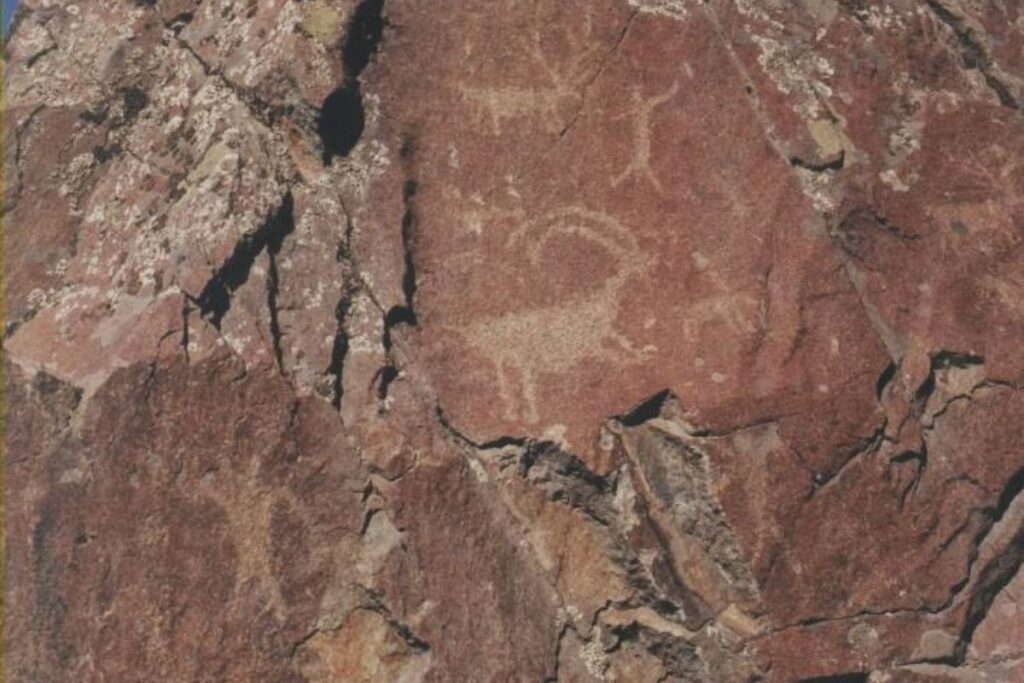
North Cascades National Park
North Cascades National Park is the largest of the three units included in the North Cascades National Park Complex. Just three hours away from the urban city of Seattle lies glaciated mountains and a wealth of wildlife and native flora. Visitors come for the breathtaking views of jagged peaks of almost three hundred glaciers found in the area.
The North Cascades National Park includes the Ross Lake National Recreation Area and the Lake Chelan National Recreation Area as well as other protected wilderness. This national park boasts the largest and most impressive glacial system in the United States. Hikers are greeted with icy terrain in contrast with the stark light of the sun and the lush green forests. This unique habitat encourages biodiversity in the area. Wildlife that can be spotted here is the likes of gray wolves, fishers, and wolverines. Rare animals such as the bald eagle, osprey, Harlequin duck can be found here too.
Aside from the outdoor activities, visitors can learn more about the different groups that have settled in and around this area throughout history. From Native Americans to Explorers and today’s people of Washington.
Things to do: Guided Tours, Bicycling, Bird and Wildlife Viewing, Boating, Camping, Climbing, Fishing, Hiking, Horsebackriding
How to get there: The best way to access North Cascades National Park by car is from State Route 20 (SR 20) corridor.
Where to Stay: A lot of options for accommodations are within the park. For overnight stays, you may check out Ross Lake Resort along State Route 20, and North Cascades Lodge at Stehekin. Other accommodations are also available in surrounding communities. >> Check prices of nearby hotels on Booking.com or Hotels.com
Entrance Fee: Free
Official Website: Click Here
Map: Download
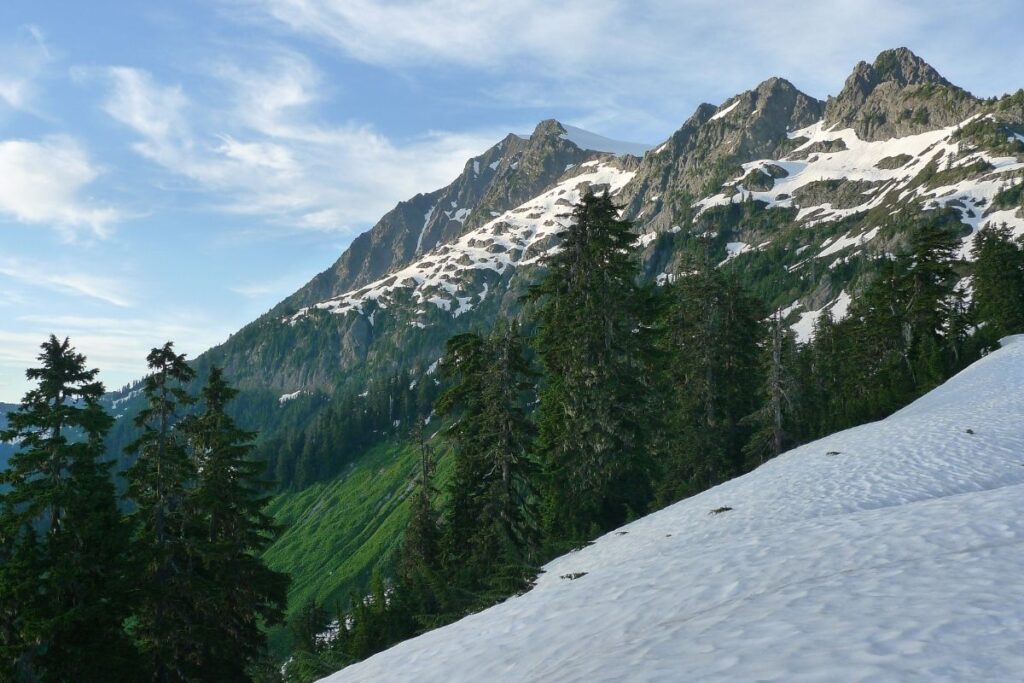
Olympic National Park
The Olympic National Park preserves and safeguards the wonderful ecosystems that make up this amazing national park. It consists of three different ecosystems in one location: forests, coastal, and glaciated mountains.
Aside from the rich biodiversity of this park, it has been serving the different communities through thousands of years in America’s history. Native Americans used the area mostly for hunting and gathering. European settlers harvested timber in the area. Today, this park serves as a tourist spot for nature lovers and recreationists.
This national park serves the unique opportunity for visitors to enjoy all three different scenic views in one location. Perfect for outdoor activities like backpacking, wildlife viewing, and hiking around the temperate forests or alpine mountains as well as fishing and boating on the scenic shores of the Olympic Peninsula.
This park was originally designated as the Mount Olympus National Monument on March 2, 1909. However, it was recognized as a national park by President Franklin Roosevelt on June 29, 1938. It was also named as one of UNESCO’s World Heritage Sites in 1981.
Things to do: Boating, Climbing, Fishing, Hiking, Wildlife Viewing, and other Tide-pool Activities.
How to get there: The easiest way to reach Olympic National Park is via the I-5 corridor or any of the quieter state roadways.
Where to Stay: Lodging and camping are available within the site. The park offers a wide range of accommodations from rooms in historic hotels to modern type hotel accommodations. You may also choose to book accommodations outside the park, there are a lot of options near Port Angeles, Sequim, and Port Townsend. >> Check prices of nearby hotels on Booking.com or Hotels.com
Entrance Fee: $30 per vehicle or free with an America the Beautiful Pass.
Official Website: Click Here
Map: Download
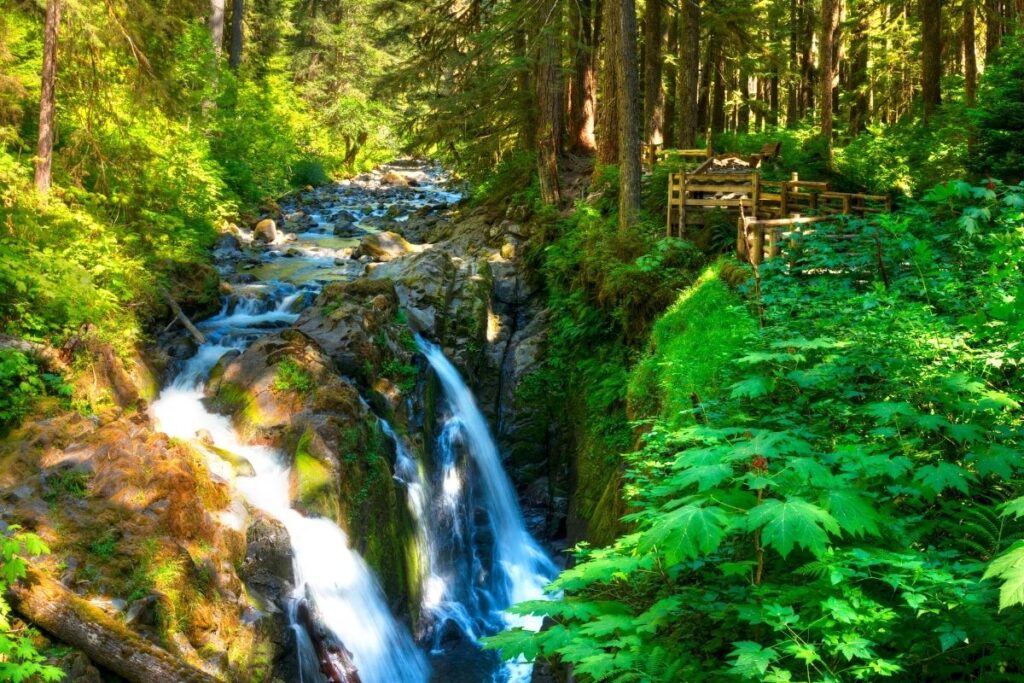
Ross Lake National Recreation Area
Nestled inside the famed alpine landscape of the North Cascades Park Complex lies the most accessible section of the park, the Ross Lake National Recreation Area. Sweeping and beautiful blue waters against the mountainous horizon are the three lakes included in this national park. The three lakes are namely, Ross Lake, Diablo Lake, and Gorge Lake. This recreation area has over 117,000 acres that consist of the North Cascades Highway, the three reservoirs mentioned, and some sections of the Washington State Route 20.
Listing down the amazing scenic destinations, it’s already obvious that this recreation area will have many outdoor activities to try aside from just basking in its breathtaking views. This is also a popular destination among recreationists for fishing, hunting, canoeing, kayaking, climbing, and hiking opportunities. One of the most popular events hosted here is the Desolation Peak Lookout which is a fire lookout every summer and is known as the setting of Jack Kerouac’s novel Desolation Angels.
This recreation area along with the rest of the North Cascades boasts some of the most biodiversity in North America. This area has an abundance of wildlife with over a thousand different species thriving here.
Things to do: Fishing, Hunting, Canoeing, Kayaking, Climbing, and Hiking
How to get there: Cars can access the North Cascades National Park and the Ross Lake National Recreation Area from State Route 20 (SR 20) corridor.
Where to Stay: The Ross Lake Resort is available for overnight accommodation. Many visitors also opt to use the many campsites in the area. >> Check prices of nearby hotels on Booking.com or Hotels.com
Entrance Fee: Free
Official Website: Click Here
Map: Download
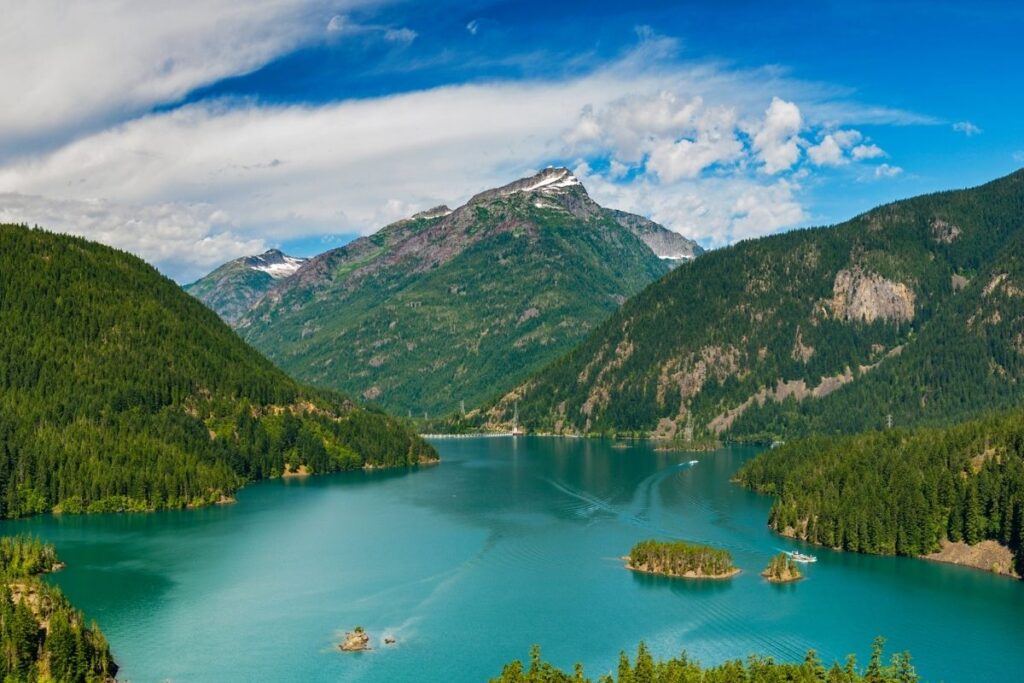
San Juan Island National Historical Park
San Juan Island National Historical Park reminds next generations of the importance of choosing peace over violence. Famous for its sandy shores, pristine woodlands, and even orca whales, it carries a lot more historic relevance in its picturesque landscapes.
This Historical Park commemorates the longtime conflict between the United States and Great Britain leading to a full-on war over a shot pig. Coined as the Pig War, American, and British soldiers were nearly fighting to the death over territory. Thankfully members from both nations decided on a more amicable solution and both came to terms with the settlement. This brought the U.S. and British nations to create military camps on the island to protect their land. The military stayed in the camp for a total of twelve years before an arbitrator rewarded the island to the United States.
Aside from its history, the park boasts plenty of space to explore. Three main shores are available for guests. Namely, Old Town Lagoon, South Beach, and Garrison Bay. Once the home of early Coast Salish tribes, hikers can explore their ancestral trails and discover the rich wildlife of the area.
Things to do: Kayaking, Hiking
How to get there: To visit the American Camp Visitor Center, you can drive west on Spring Street to Mullis Street. The center is located about six miles southeast of Friday Harbor.
Where to Stay: There is no food or lodging (including camping) within San Juan Island National Historical Park, but the surrounding community offers a variety of choices. >> Check prices of nearby hotels on Booking.com or Hotels.com
Entrance Fee: Free
Official Website: Click Here
Map: Download
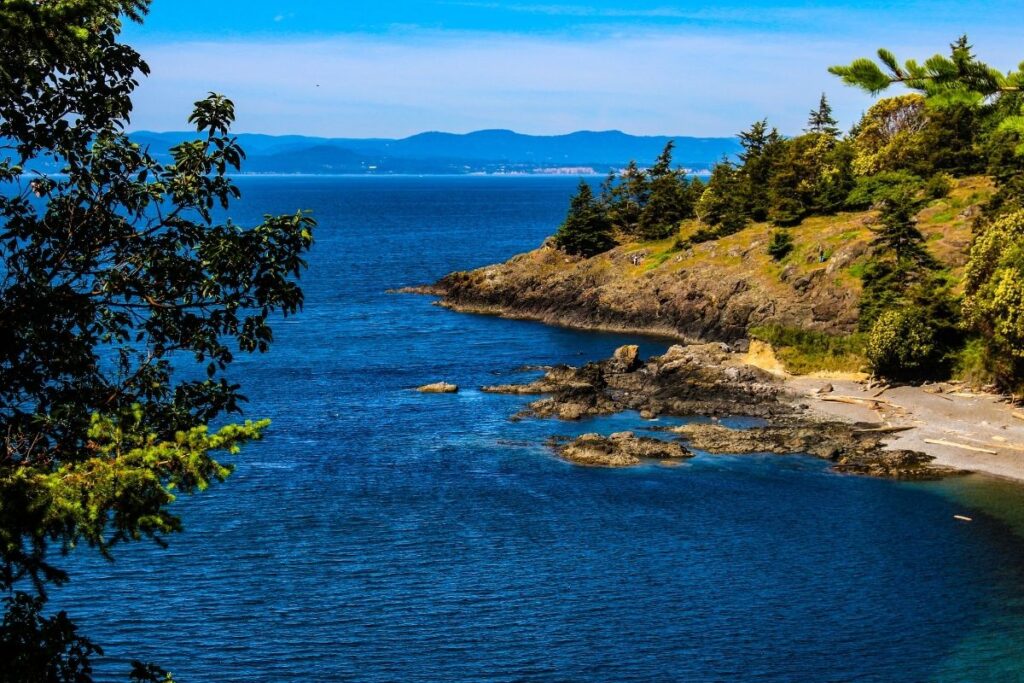
Whitman Mission National Historic Site
Whitman Mission National Historic Site commemorates the tragic and horrific death of the Whitmans and 11 others. While this story remains controversial, it did change history forever.
The Whitman Massacre or Walla Walla Massacre was an incident that happened on November 29, 1847. Members of the Native American tribe of Cayuse believed that Whitman, a missionary and physician, poisoned over 200 Native Americans during his settlement in the area. While measles was a rampant disease in the area, the tribe held Whitman responsible for these deaths. This conflict led the tribe to take matters into their own hands and killed Marcus Whitman, his wife Narcissa, and eleven others. This incident shocked the U.S. government which led to the Cayuse War between the Native American tribes and American settlers. This was one of many subsequent wars between these two sides, which eventually led to negotiations between Native Americans and settlers to create different Indian reservations on the Columbia Plateau.
Today, visitors can take the time to go to the museum and learn more about these events. The park was designated a National Historic Site on January 1, 1963.
Things to do: Variety of Ranger Programs and Events
How to get there: The nearest airport going to the park is located in Walla Walla (11 miles east of the park). If you wish to travel by car, you can take So. 2nd Street to US-12W.
Where to Stay: There is no food or lodging (including camping) within Whitman Mission National Historic Site but accommodations can be found in Walla Walla. >> Check prices of nearby hotels on Booking.com or Hotels.com
Entrance Fee: Free
Official Website: Click Here
Map: Download
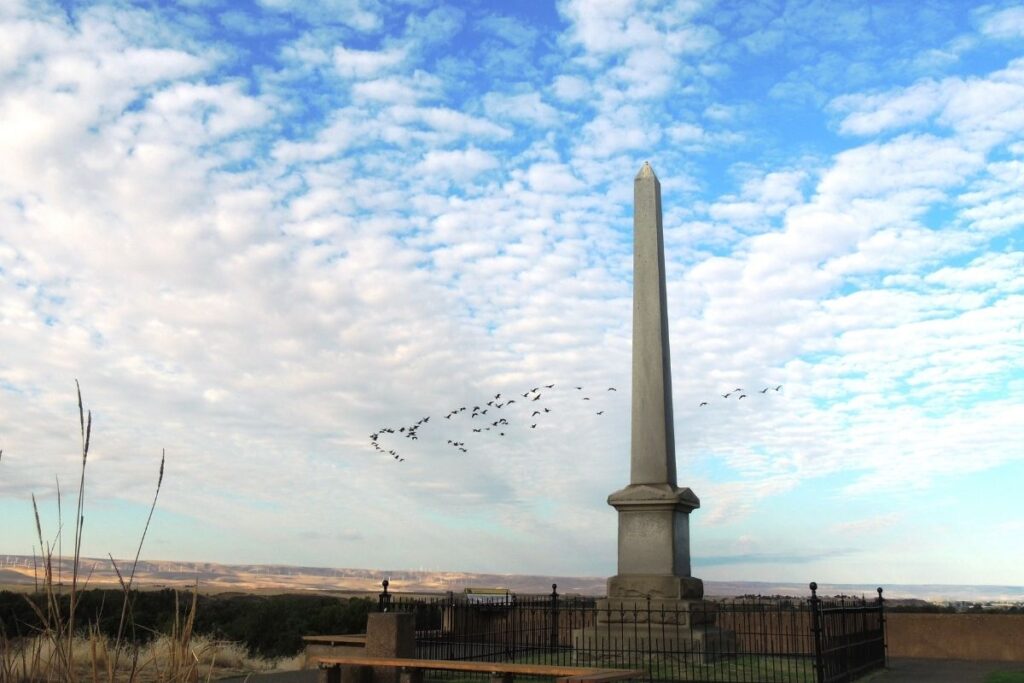
Associated Sites of Washington
Ice Age Floods National Geologic Trail
Ice Age Floods National Geologic Trail follows the different networks of trails where the effects of the Glacial Lake Missoula floods of the last glacial period are still seen today. Stretching within the states of Montana, Oregon, Idaho, and Washington, this trail is famous for its geological relevance, and different historical and natural sites along the trail.
Back in the last Ice Age, about 18,000 to 15,000 years ago, there was still an ice dam that was about 3,000 square miles. This was called the Glacial Lake Missoula. With thousands of years of changes in Earth, this ice dam eventually flooded the area and shaped what we know Pacific Northwest today. It created many features like the Moses Coulee, the Channeled Scablands, and much more throughout the many cumulative changes throughout many millennia.
In the Washington portion of the trail, there are many museums and visitor centers for tourists to go and discover more about the wealth of historical and scientific contributions in this area.
In 2009, it was designated as the first National Geologic Trail in the United States.
Things to do: Visit Museums, Hiking
How to get there: In Washington, travelers can fly into the state through Spokane International Airport or Seattle-Tacoma International Airport.
Where to Stay In Ice Age Floods National Geologic Trail: There are many options for accommodation in the different areas included in the trail like in Coulee Dam, Stevenson, Davenport, Richland, and Ilwaco.
Where to Stay: There are plenty of places to stay at towns along the trail
Entrance Fee: Fees and permits vary by location.
Official Website: Click Here
Map: Download
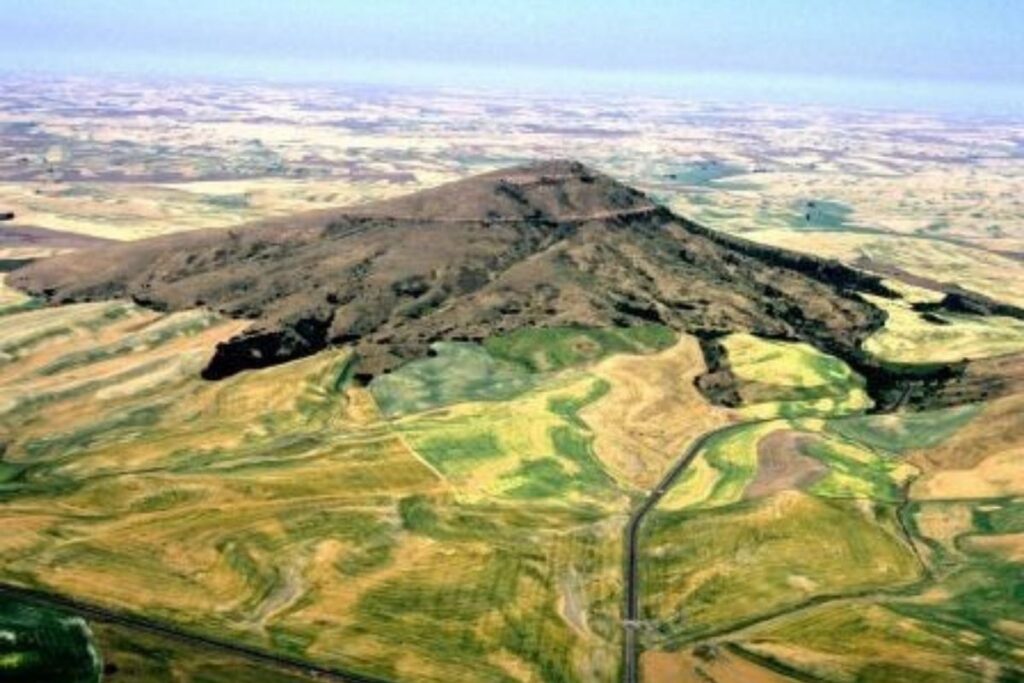
Lewis and Clark National Historic Trail
Lewis and Clark National Historic Trail span across sixteen states commemorating the famous Lewis and Clark Expedition. The Trail connects Pennsylvania, Ohio, West Virginia, Kentucky, Indiana, Illinois, Missouri, Kansas, Nebraska, Iowa, South Dakota, North Dakota, Montana, Idaho, Washington, and Oregon.
The Lewis and Clark Expedition mark the discovery and exploration of the newly claimed area of America during the Louisiana Purchase. Formerly controlled by the Kingdom of France, America was able to obtain this 828,000 square mile area for fifteen million dollars. President Thomas Jefferson commissioned this exploration in the 19th century to not only assert their power among the different settlements but also to explore the wealth of wildlife, native plants, and other scientific and economic pursuits. Today, hikers can embark on their exploration along the trail and visit the different landmarks and notable stops throughout.
In 1948, this trail was named “Lewis and Clark Tour-way” and with many iterations, redesignations, and extensions, the Lewis and Clark National Historic Trail was established completely in 2019.
Things to do: Hiking, Museum Exhibits
How to get there: In Washington, travelers can fly into the state through Spokane International Airport or Seattle-Tacoma International Airport.
Where to Stay: There are many options for accommodation in the different cities and counties of Washington.
Entrance Fee: Fees and permits vary by location.
Official Website: Click Here
Map: Download
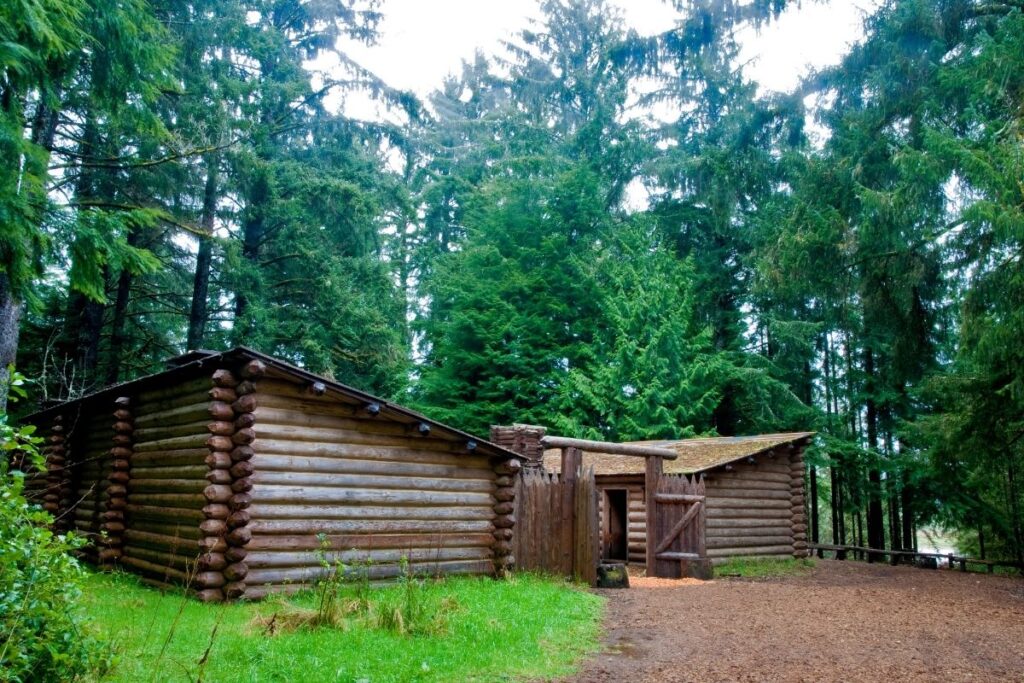
Minidoka National Historic Site
Minidoka National Historic Site remembers and commemorates events that happened in World War II. About 9000 Japanese Americans were imprisoned in the Minidoka War Relocation Center. This was only one of ten camps created to imprison Japanese Americans during this time. The Minidoka War Relocation Center was active from 1942-1945. As an act against the civil rights of these people, the park aims to remember this tragic reality in American history.
This historic site educates visitors about the racist aftermath of Pearl Harbor in 1941. President Franklin D. Roosevelt signed Executive Order 9066, wherein over 120,000 Japanese Americans were relocated from their homes to the most desolate areas in the country at the time. This was done solely based on race and without due process. Today, the site remains hopefully, as a lesson for history not to repeat itself.
The site was originally established as the Minidoka Internment National Monument in 2001 and is now redesignated as a Historical Site. The area also consists of the Bainbridge Island Japanese American Exclusion Memorial which is in Bainbridge Island, Washington.
Things to do: Hiking, Go to Visitor Center
How to get there: The closest airport to the area is the Seattle-Tacoma International Airport. From Seattle, you can drive down to the waterfront and take a ferry to the island.
Where to Stay: There are many options for accommodation like hotels, hostels, and inns throughout Seattle for visitors to enjoy. >> Check prices of nearby hotels on Booking.com or Hotels.com
Entrance Fee: Free
Official Website: Click Here
Map: Download
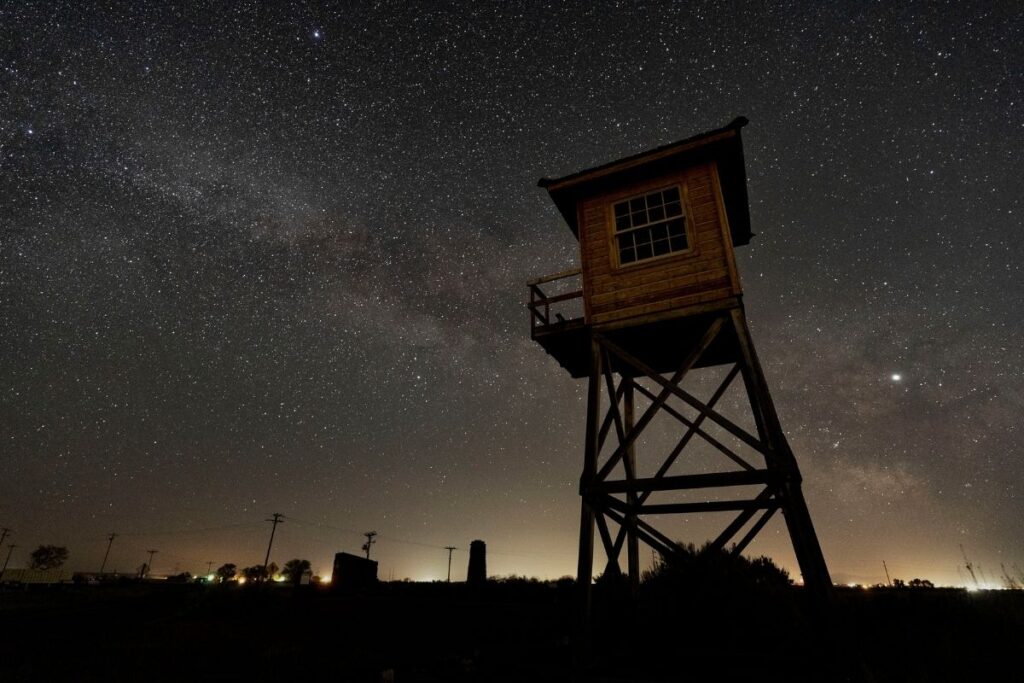
Oregon National Historic Trail
Despite its namesake, the Oregon National Historic Trail stretches across a total of seven states: Missouri, Kansas, Nebraska, Wyoming, Idaho, Washington, and, Oregon. About 2170 miles long, the trail boasts scenic views, a plethora of history, and recreation opportunities. Unfortunately, this is no longer a complete trail. Segments of the original route are now owned by other public and private entities. Only some segments are still open for hiking and other recreational activities.
The Oregon National Historic Trail aims to preserve the route originally paved by fur traders and trappers in the 1800s. Throughout history, American settlers looking for lush farmlands and a promise of a more fortunate future led them to weeks of hardship as they made their way through this trail towards Oregon. Other memorable events throughout history made this trail remarkable like the Lewis and Clark Expedition, the Mormon emigration, and even the California Gold Rush.
Today, travelers can go through the trail state by state and enjoy what each stop has to offer. In Washington specifically, one of the famous destinations is the Fort Vancouver National Historic Site.
Things to do: Visit Museums and Historical Sites, Hiking, Horseback Riding
How to get there: The route passes through seven states from Missouri to Oregon. The nearest airport to Vancouver is Portland (PDX) Airport which is 4.8 miles away.
Where to Stay: There are many options for accommodation in the Vancouver area for Washington.
Entrance Fee: Entrance Fee: Fees and permits vary by location.
Official Website: Click Here
Map: Download
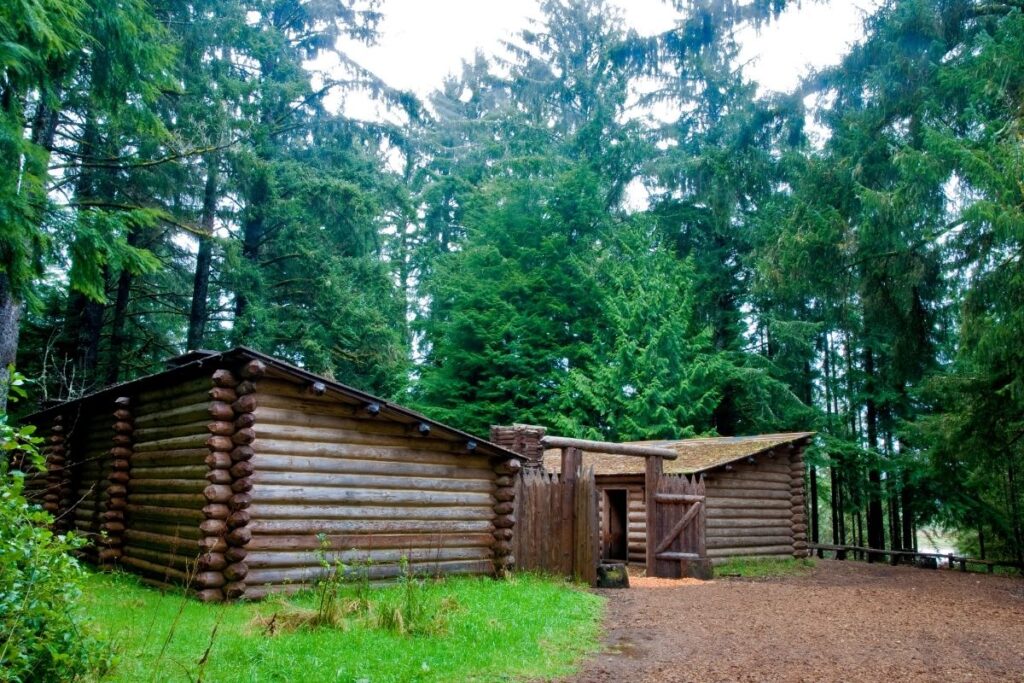
Wing Luke Museum Affiliated Area
The Wing Luke Museum Affiliated Area is a unique experience for visitors to learn more about and explore the culture, history, and lives of Asian Pacific Americans. Located in the city’s Chinatown-International District, this area aims to preserve the Asian American experience through different collections, museums, and historic landmarks in the area.
The museum was named after Wing Luke, which was the first-ever Asian American elected to public office in Pacific Northwest. He served as a Seattle City Council Member during his time. The area consists of the East Kong Yick Building, where the museum is located, and the surrounding neighborhood, Seattle’s Chinatown-International District. The East Kong Yick Building is a historic hotel in the early 1910s, wherein many Asian American pioneers once stayed. Featuring the original tin ceilings and even mahjong sets, the museum along with the surrounding area transports visitors to Asia. Smell Chinese herbs in the market, taste authentic roast duck and explore the Asian-American experience.
Aside from ancestral Asian artifacts, the museum now includes contemporary collections like work made by current Pan-Asian artists and has been recognized by world-acclaimed journalist Ron Chew.
It was officially established as an affiliated area of the National Park just in February of 2013.
Things to do: Guided Tours, Visit Museums
How to get there: Located in South King Street, Seattle, Washington, visitors drive up the city through Highway I-5. The closest airport to the area is the Seattle-Tacoma International Airport.
Where to Stay: There are many options for accommodation like hotels, hostels, and inns throughout Seattle City for visitors to enjoy. >> Check prices of nearby hotels on Booking.com or Hotels.com
Entrance Fee:
Official Website: Click Here
Map: Download
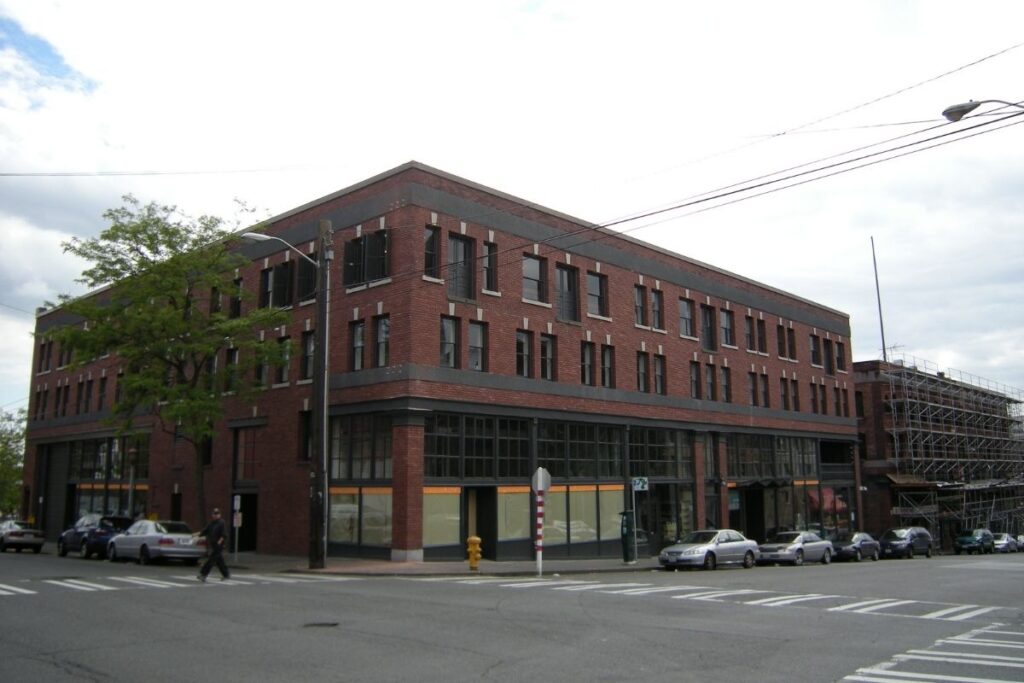
List of National Parks of Washington
There are 13 National Parks in Washington that received 7.3 million visitors in 2020 and generated over $576 million in tourism economic benefits. Washington Park visitation is lead by Olympic National Park, Lake Roosevelt National Recreation Area and Mount Rainier National Park.
- Ebey’s Landing National Historical Reserve
- Fort Vancouver National Historic Site (OR, WA)
- Klondike Gold Rush National Historical Park (AK, WA)
- Lake Chelan National Recreation Area
- Lake Roosevelt National Recreation Area
- Lewis and Clark National Historical Park (OR, WA)
- Manhattan Project National Historical Park (NM, TN, WA)
- Mount Rainier National Park
- Nez Perce National Historical Park (ID, MT, OR, WA)
- Burial Site of Chief Joseph the Younger
- Nez Perce Campsites at Nespelem
- Buffalo Eddy
- North Cascades National Park
- Olympic National Park
- Ross Lake National Recreation Area
- San Juan Island National Historical Park
- Whitman Mission National Historic Site
Affiliated Areas
- Ice Age Floods National Geologic Trail (WA, OR, ID, MT)
- Lewis and Clark National Historic Trail (IA, ID, IL, IN, KS, KY, MO, MT, NE, ND, OH, OR, PA, SD, WA, WV)
- Minidoka National Historic Site (ID, WA)
- Oregon National Historic Trail (ID, KS, MO, NE, OR, WA, WY)
- Wing Luke Museum Affiliated Area
Washington National Parks also provides support and management to 2 National Heritage Areas as well as 1,608 National Register of Historic Places Listings.
There are 24 National Historic Landmarks, 18 National Natural Landmarks, 873 Places recorded by the Heritage Documentation Program, and over 8.2 million objects in the Washington National Parks Museum Collections. There are 1,152 Archaeological Sites in the Washington National Parks.
Washington is home to 40 State Parks.
Washington UNESCO World Heritage Sites
- Olympic National Park
Washington’s Neighboring States
Planning to visit a few of the National Parks in Washington and wandering about what national parks are in neighboring states. Here are the list of National Parks in surrounding states.
- Alaska National Parks – Alaska is home to 8 National Parks (Denali, Gates of the Arctic, Glacier Bay, Katmai, Kenai Fjords, Kobuk Valley, Lake Clark, and Wrangell – St. Elais) and 15 other NPS units.
- Idaho National Parks – Idaho shares Yellowstone National Park with Montana and Wyoming and has 6 other units.
- Oregon National Parks – Oregon is home to Crater Lake National Park and 5 other units.
Final Thoughts of the National Parks of Washington
I hope this guide to the National Parks of Washington is helpful as you plan to explore these amazing National Parks.
Pin for Later: National Parks in Washington: Explore the 14 Washington National Parks (2021 Update)

Jennifer Melroy
Hi, I'm Jennifer!
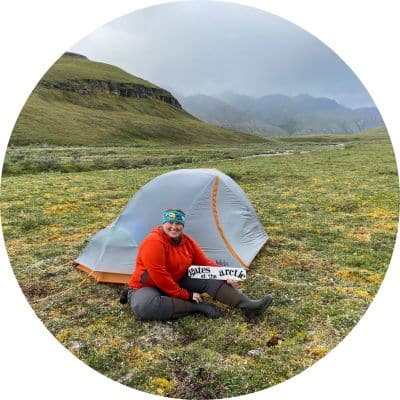
Welcome to the wonderful world of National Parks. I'm here to help you plan your NEXT amazing adventure through the United States National Parks and beyond. I want the national parks to be accessible to all.
I live in Tennessee, and when I'm home, you can find me hiking in the Smokies and the Cumberland Plateau.
58/63 National Parks
250+/423 National Park Units
Want to know more? Start Here.
Explore More
ACKNOWLEDGEMENT OF LAND
On this site, we promote travel to the United States and beyond that are the traditional lands of Indigenous and First Nations peoples.
With respect, I make a formal land acknowledgment, extending my appreciation and respect to these lands’ past and present people.
To learn more about the people who call these lands home, I invite you to explore Native Land.
DISCLAIMER
National Park Obsessed assumes no responsibility or liability for any errors or omissions in the content of this site (NationalParkObsessed.com). The information contained in this site is provided with no guarantees of completeness, accuracy, usefulness or timeliness. You are encouraged to conduct your own due diligence before acting on the information provided on this site and should not rely on the opinions expressed here.
There is an inherent risk in all outdoor recreation activities, the reader assumes all responsibility for their own personal safety.
DISCLOSURE
We are a participant in the Amazon Services LLC Associates Program, an affiliate program designed to provide a means for us to earn fees by linking to Amazon.com and affiliated sites.
Privacy Policy • About Us • Contact
Select stock photography provided depositphotos
Copyright ©2023 National Park Obsessed, LLC
Privacy Overview
Last Updated on 3 Jan 2022 by Jennifer Melroy
